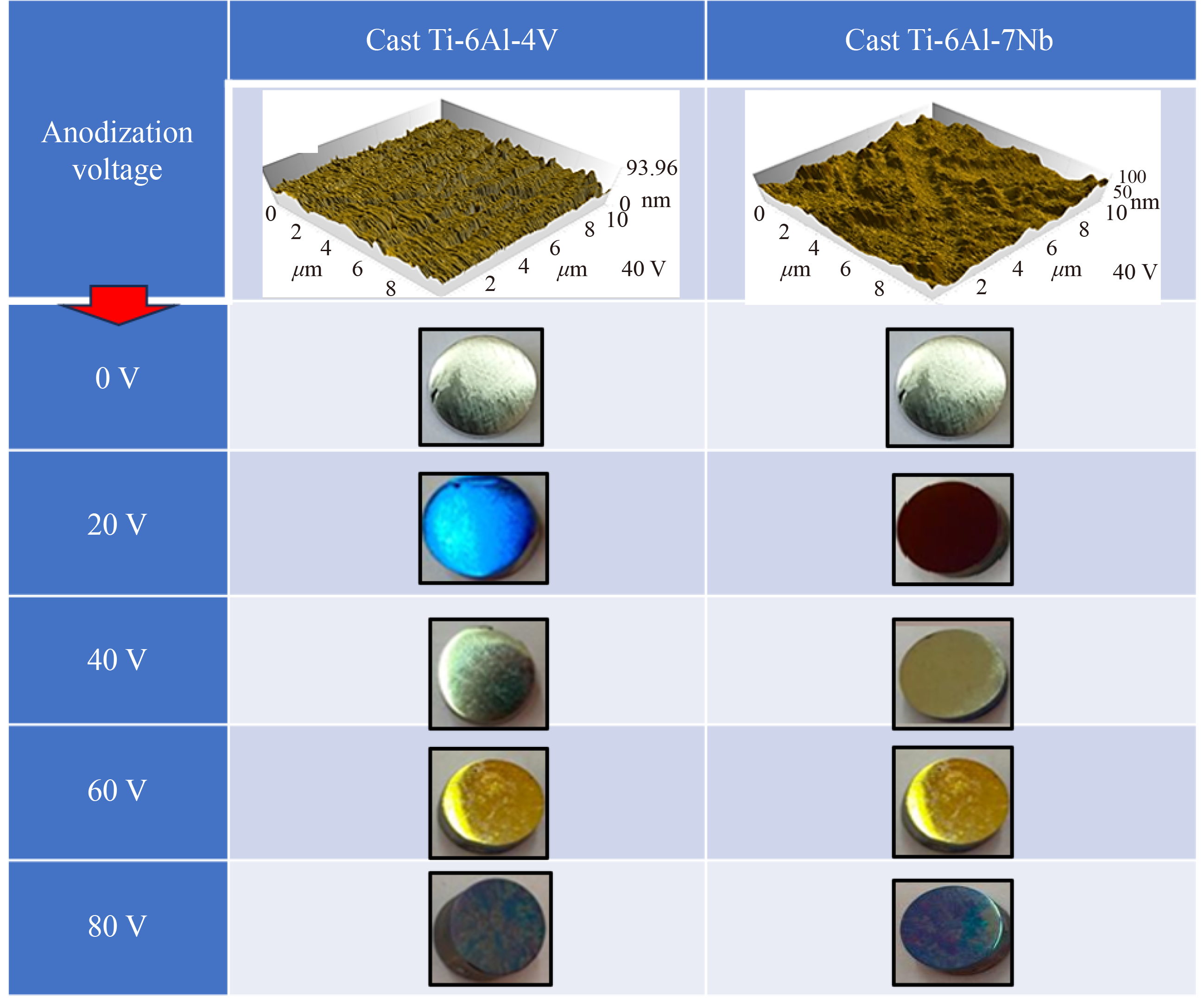Titanium and its alloys are utilized extensively in various industries due to their unique traits, such as their low modulus of elasticity, elevated strength-to-weight ratio, great biocompatibility, and corrosion resistance [
1]. Titanium alloys are popular as implant materials for orthopedic and dental applications due to their favorable mechanical properties and biocompatibility [
2,
3]. Surface properties like chemical composition and topography influence this biocompatibility. The naturally formed TiO
2 layer in the initial stages of the osseointegration process is not optimal for bone adhesion and growth [
4,
5]. Furthermore, post-surgical problems include implant-associated infection and mechanical loosening, compromising long-term performance. Ti-6Al-4V is the most commonly utilized
α +
β Ti alloy and is frequently employed for surgical repair and replacement implants, such as intramedullary nails, hip joints, dental implants, and bone plates [
6,
7]. However, the release of V and Al ions, which have toxic effects and result in various health problems over time, such as systemic dermatitis, peripheral neuropathy, and Alzheimerʼs, makes long-term implantation of Ti-6Al-4V raise safety concerns [
8,
9]. Then, researchers created V-free Ti alloys such as Ti-6Al-7Nb, which had mechanical and metallurgical characteristics almost similar to Ti-6Al-4V [
10]. Despite the effectiveness of V-free Ti alloys, the Al content of the materials might contribute to various osteal and neural issues. As a result of the aforementioned defects, surface modification can be used to overcome these problems while keeping the required bulk properties [
11].













